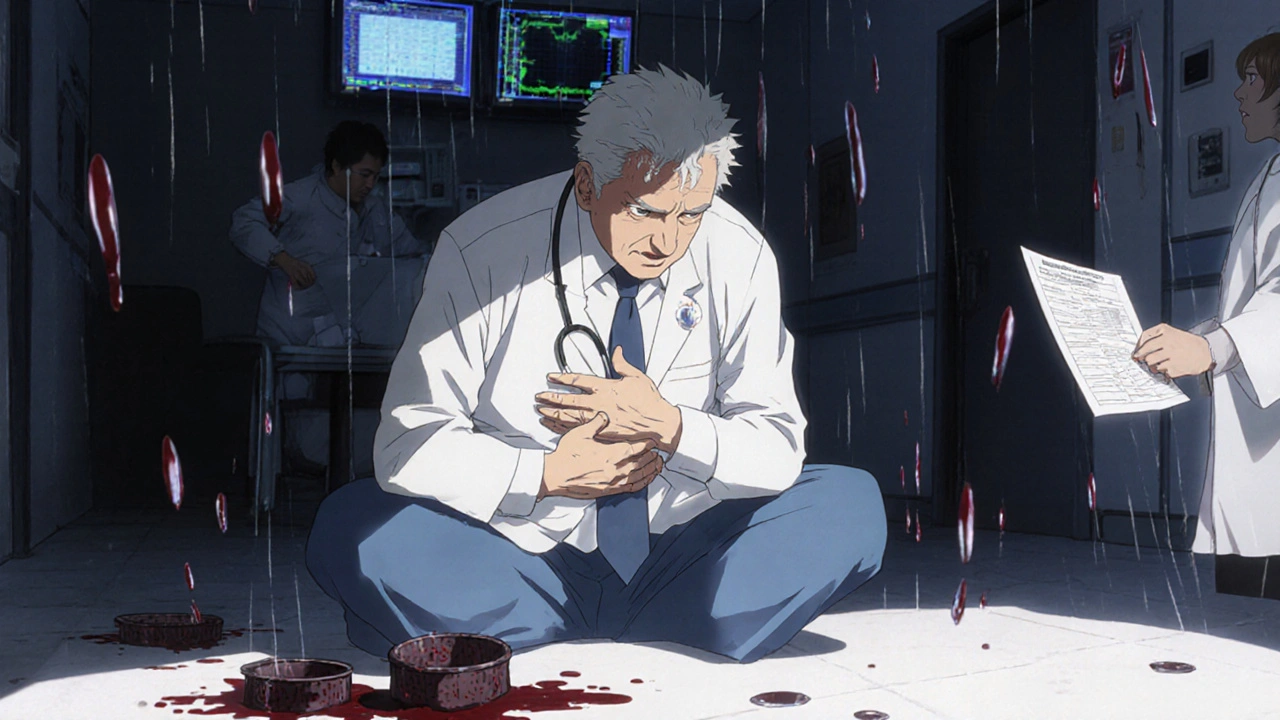DOAC Bleeding: What You Need to Know About Risks and Management
When you take a DOAC, a direct oral anticoagulant used to prevent dangerous blood clots. Also known as novel oral anticoagulants, these drugs—like apixaban, rivaroxaban, and dabigatran—are meant to reduce stroke risk in people with atrial fibrillation or after joint surgery. But they don’t come without risk: DOAC bleeding is the most serious side effect you need to watch for.
Unlike older blood thinners like warfarin, DOACs don’t need regular blood tests to check their levels. That’s convenient, but it also means you can’t easily tell if the drug is building up in your system. This is especially risky if you’re older, have kidney problems, or take other meds like NSAIDs or antiplatelets. Even a minor fall can lead to internal bleeding you don’t notice until it’s serious. The most common sites? The stomach, brain, and urinary tract. And while DOACs are generally safer than warfarin for major bleeding, they still cause about 1 in 20 patients to have a serious bleed over five years.
What makes DOAC bleeding different is that reversal agents exist now. Idarucizumab can instantly stop dabigatran’s effect. Andexanet alfa reverses factor Xa inhibitors like rivaroxaban and apixaban. These aren’t magic bullets—they’re emergency tools used in hospitals. If you’re on a DOAC and start bleeding, don’t wait. Call 911. Time matters more than the exact drug you’re taking.
Some people think skipping a dose is safer if they’re bruising more. That’s dangerous. Stopping your DOAC without medical advice raises your stroke risk faster than bleeding does. Instead, talk to your doctor about your bleeding signs—like nosebleeds that won’t stop, red or brown urine, or black stools. They might adjust your dose, switch drugs, or check your kidney function. Your age, weight, and other meds all play a role. There’s no one-size-fits-all plan.
You’ll also find posts here that cover related topics: how to safely manage anticoagulants alongside other drugs, what to do if you miss a dose, and how to spot early signs of internal bleeding. You’ll see comparisons between DOACs and older options, real-world advice for caregivers, and what to pack in an emergency kit if you’re on long-term therapy. These aren’t theoretical guides—they’re written by people who’ve been there, or by clinicians who treat this daily.
If you’re on a DOAC, you’re not alone. Millions are. But knowing what to watch for, when to act, and how your body responds to the drug can make all the difference. This collection gives you the facts—no fluff, no hype—just what you need to stay safe while staying protected from clots.
